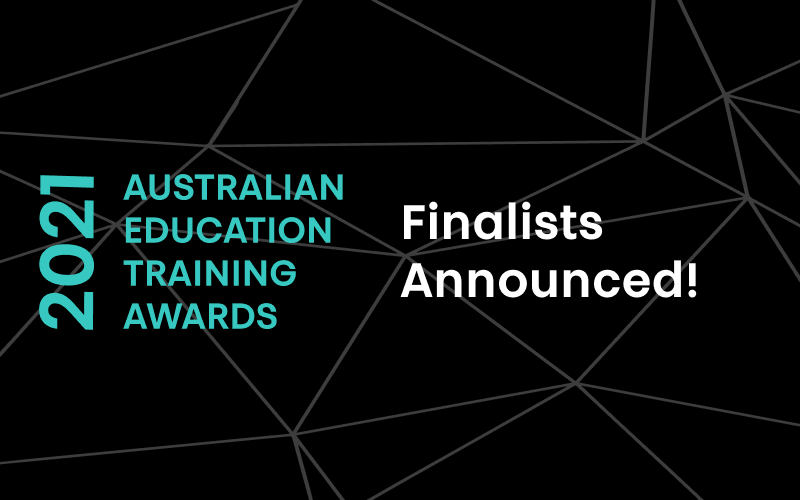Category: News
We are proud to announce that Candlefox is now B Corp Certified! More and more businesses are becoming B Corp certified and committing to high standards of social and environmental performance, accountability, and transparency. But what does it mean for Candlefox?
By taking the forward-thinking decision to become B Corp Certified, we pledge to our providers, learners and employees that we are committed to creating positive change through sustainable and ethical business practices.
What does being B Corp Certified mean?
In today’s business landscape, companies have the power to positively impact society far beyond their profits. This is where B Corps come in. B Corps are businesses that voluntarily meet a higher standard of social and environmental performance, transparency, and accountability.They are certified by B Lab, a non-profit organisation that evaluates companies based on their impact on stakeholders, including employees, customers, and the environment.
B Corps are committed to using their business as a force for good and strive to create a more sustainable and equitable world. By becoming a B Corp, companies differentiate themselves from their competitors, by attracting purpose-driven customers and employees, and can create a connection with a global community of like-minded business leaders.
In short, B Corps are redefining success in business by putting people and the planet first.
Why did Candlefox become a B Corp?
Candlefox embarked on the journey of B Corp certification with two fundamental objectives in mind:
1. To contribute to a healthier and more sustainable planet.
2. to prioritise the highest level of satisfaction and well-being among our employees.
We don’t just talk about these values, they are deeply ingrained in our strategic decisions and day-to-day operations. By upholding ethical practices throughout our business, from operations management to employee relations and customer engagement, we ensure that we have a positive and tangible impact on the world and people around us.
We understand that the prosperity of our network, including our valued providers and learners, is intrinsically linked to our ability to ethically market our services. Our B Corp status serves as a testament to our unwavering commitment to these principles, enabling us to envision and create a brighter, more responsible future for all stakeholders.
What are our B Corp goals?
At Candlefox, we have set ambitious B Corp goals to reflect our dedication to being leaders in sustainable and ethical business within the education sector. These goals are not just aspirations, they are concrete benchmarks we are striving to meet to generate real impact and foster measurable growth and improvement. Below is an outline of our key initiatives that will guide our actions and accountability as a B Corp.
Energy and climate goals
- Reduce emissions by 25% per FTE by FY24 against our FY22 baseline.
- Commit to purchasing 100% renewable energy or certified GreenPower for the residual electricity used in the Candlefox HQ by the end of FY24.
- Purchase high-quality verified carbon offsets to cover 100% of our annual emissions.
- Reduce absolute emissions by 50% by 2030 and 90% by 2040 against our FY22 baseline in line with the Science Based Targets initiative (SBTi) Corporate Net Zero Standard.
- Reduce energy usage by 5% per FTE by FY24 against our FY22 baseline.
Water and waste goals
- Achieve a 5% reduction in water usage by FY24 against our FY22 baseline.
- Achieve a 20% reduction of waste sent to landfill by FY24 against our FY22 baseline.
Social goals
- Maintain a minimum 80% employee Net Promoter Score (eNPS).
- Increase external professional development participation against FY22 baseline.
- Prioritise ethical marketing practices in all marketing and advertising activities.
- Ensure data security breaches remain at 0 cases.
- Achieve B Corp certification by FY24.
- Maintain % of female managers.
- Improve % of age diversity and representation from other minority groups in our workforce.
Why is ethical marketing important to us?
As a certified B Corp, we are deeply committed to embedding our ethical marketing policy into every aspect of our operations. Our unwavering dedication to ethical marketing is rooted in our core principles of honesty, integrity, and respect for our users, partners, and the wider community. We firmly believe that upholding rigorous ethical standards in our marketing and advertising initiatives is paramount to nurturing trust and fostering enduring relationships.
Our comprehensive ethical marketing policy encompasses the following key areas:
- Adhering to our core ethical principles across all marketing activities, including transparency, honesty, protecting the vulnerable, and user-centricity.
- Ensuring data privacy and security.
- Continuously seeking feedback and striving for improvement.
- Responsible communication regarding the environment, social impact, and governance (ESG).
- Promoting inclusive marketing practices.
We are proud to champion ethical marketing practices, as they serve as the cornerstone of our commitment to making a positive impact on society and the environment.
What are some B Corp initiatives we’re working on right now?
Since Candlefox becoming B Corp Certified just a couple of months ago, we’ve been actively developing and implementing a wide range of initiatives designed to meet, and where possible, exceed, our B Corp commitments.
- Implementing an improved cardboard recycling solution.
- Switching to 100% renewable energy sources for office operations.
- Encouraging a paperless office culture through digital documentation and communication.
- Providing incentives for employees to use public transportation, cycle, or walk.
Candlefox’s journey to B Corp certification is a representation of our dedication to not just be a leader in the educational services sector, but to also act as a champion for sustainability and ethical business practices. Through the achievement of our B Corp goals and the ongoing roll-out of impactful initiatives, we look forward to continuously contributing to building an inclusive, sustainable future.
The recent inaugural meeting of the Australia India Education and Skills Council marked a significant milestone in international educational collaboration. The new Australia-India education partnership underscores the strengthening ties between India and Australia in the education sector, leading to the signing of a pivotal education partnership.
What is the Australia-India education partnership?
Two of Australia’s most prestigious universities, the University of Wollongong and Deakin University have announced plans to establish branches in India’s Gujarat International Finance-Tec (GIFT) City. This move is part of a broader agreement that involves six Australian universities, including Western Sydney University, the University of Canberra, La Trobe University, Griffith University, James Cook University, and Flinders University, to offer their courses to students in India.
These universities are exploring collaborative ways to launch into new international markets and deliver Australian degrees in India. This innovative approach involves working together to deliver courses overseas, rather than operating as individual entities. The primary aim is to expand education access for Indian students and enhance the presence of Australian universities in the region. This agreement builds on other Australian education deals already in place in India.
What does the Australia-India education partnership aim to achieve?
The decision to establish these campuses is a response to the growing demand for higher education services in India. The Indian Government’s goal is to enrol 50% of young people in post-school education by 2035. The presence of Australian universities in India, particularly in-country campuses offering Australian courses, is expected to support this ambitious goal. Moreover, this expansion presents a significant economic opportunity for Australian universities. It allows them to extend their reach and access a broader student base beyond Australia.
Expanding beyond India: Looking towards Indonesia
Three Australian universities will establish campuses in Indonesia, enhancing international education and strengthening ties between Australia and Indonesia. Western Sydney University, Deakin University, and Central Queensland University are expanding their presence in Indonesia.
Western Sydney University plans to open a branch campus in Surabaya, East Java, focusing on degree programs and short courses with an emphasis on STEM skills. The Surabaya campus is expected to start in late 2023, with the first intake of students planned for September 2024.
Deakin University, in partnership with the UK’s Lancaster University, plans to offer dual programs in Bandung, West Java. This joint venture will provide a unique combination of Australian and British degrees, subject to approval by national regulators. The Bandung campus has strong support from both the Australian and British governments, highlighting the importance of this collaboration.
Central Queensland University has been active in Indonesia since 2019 through a university centre in Jakarta, in partnership with Bakrie University. This collaboration allows Indonesian students to earn Australian degrees. CQUniversity is exploring additional locations in Indonesia to align its teaching and research expertise with local workforce needs.
These initiatives align with Indonesia’s goal to add 57 million skilled workers to its economy by 2030. The expansion of Australian universities into Indonesia is seen as a crucial step in meeting this target and contributing to Indonesia’s growing economy and human capital needs.
What opportunity does the Australia-India education partnership create for education providers?
For education providers, this recent development serves as a compelling call to thoroughly evaluate and explore similar opportunities. The strategic move of Australian universities into India not only signifies a new era in global educational collaboration but also presents a remarkable model for other institutions to consider and potentially emulate.
This proactive approach to international education highlights the paramount importance of fostering cross-border partnerships as a means to effectively respond to the ever-evolving global educational landscape, catering to the diverse needs and emerging trends of students worldwide.
By embracing such collaborative initiatives, educational institutions can position themselves at the forefront of innovation and cultivate a truly global learning environment.
The inaugural Australia India Education and Skills Council gathering and the subsequent education partnership mark a pivotal moment in international education. This development not only strengthens educational ties between Australia and India but also opens new avenues for other education providers to explore similar collaborations.
As the landscape of global education evolves, it is crucial for education providers to stay informed and consider whether similar opportunities exist for them to expand their global footprint.
Blog
2021 Australian Education and Training Awards Winners Announced

On 25 November 2021, the Australian Education and Training Awards celebrated 16 outstanding Australian training organisations.
The inaugural awards was held virtually, with training organisations across Australia in attendance.
Four award recipients were selected from a pool of 16 finalists. They are:
The awards is a national showcase of both accredited and non-accredited training organisations demonstrating excellence in vocational education and training.
Candlefox’s Head of Partnerships, Jim Rodd, says the awards exemplify the best in our VET sector.
“It is important for us to recognise and celebrate outstanding training organisations and their impact on our domestic learners. These are organisations who are delivering the highest standard of industry-relevant courses that contribute to Australia’s pipeline of skilled workers,” says Jim.
Education expert and thought leader, Claire Field, echoed Jim’s statements.
“As we all prepare to enter a post-COVID world, we must take time to recognise the achievements of our VET sector over what has been an incredibly difficult time,” Claire says.
“This year’s award recipients and finalists have demonstrated remarkable resilience and they should be commended for it. It’s great to see the excellence within the vocational education and training sector being recognised.”
“I’m honoured to have played a role in recognising these future leaders, innovators, and change-makers. Congratulations, again, to Candlefox’s 2021 award recipients and finalists.”
If you’d like to catch up on the 2021 awards, you may view the winners and finalists or watch the recording of the awards ceremony.
Blog
2021 Australian Education and Training Awards Finalists Announced

Celebrating our inaugural year, the 2021 Australian Education and Training Awards showcases a selection of high-performing educational institutions, who are making an impact in our vocational education and training (VET) sector.
As the host of the awards, we are proud to have received an overwhelming number of nominations from standout organisations across Australia. The high calibre of nominations is a testament to the exceptional talent within our education sector.
This year’s awards will showcase 12 finalists across our four award categories:
While winning an award is an exciting achievement, we commend all organisations who have been nominated or shortlisted. Selection as a finalist or nominee in this award program is a massive milestone itself, and we recognise and celebrate your ongoing commitment, resilience and innovation to our VET sector.
The 2021 Awards will be held virtually on Thursday 25 November, where award winners will be announced. In addition to this, our special co-host, Claire Field, will deliver an exclusive keynote on the state of education and training in Australia.
We invite all finalists, nominees, and industry to tune in to this vibrant presentation, details below.
Date: Thursday 25 November 2021
Time: 5:00pm AEDT
Where: Watch the event online at the Australian Education and Training Awards website
Meet the 2021 finalists!
Blog
What’s Happening to Polytechnics in 2021 Under New Zealand’s Reform of Vocational Education

Under New Zealand’s Reform of Vocational Education (RoVE), 16 existing polytechnics merged under one mega-polytech – Te Pūkenga.
In 2019, the government announced reforms to the country’s vocational education system. The reform will see New Zealand build a more robust and sustainable education ecosystem.
There are seven key changes proposed under this initiative:
This article will take a closer look at Te Pūkenga as it continues to be rolled out across New Zealand.
What is Te Pūkenga?
“Vocational education in New Zealand today is overly complex and not attractive enough for neither students nor employers,” says Minister of Education Chris Hipkins.
Te Pūkenga (previously known as the New Zealand Institute of Skills and Technology) will bring depth to New Zealand’s current vocational education system.
The mega-polytech will bring together 16 regional Institutes of Technology and Polytechnics (ITPs) under one organisation. Acting as a joint network of education providers, Te Pūkenga will be the ultimate long-term skills training partner for learners, employers and communities.
Through Te Pūkenga, students will be able to shift between work-based, on-campus or online learning – allowing for a more well-rounded educational experience.
Why does New Zealand need Te Pūkenga?
Te Pūkenga was created to:
New Zealand’s workforce is rapidly changing, with certain industries declining, while others rapidly accelerate. At the same time, literacy, numeracy and technical skills are becoming more important in a wide array of roles, including blue-collar jobs. This means that strong collaboration between industry and vocational education providers is needed to ensure that graduates have the right skills to contribute meaningfully to the workforce.
The economic impact of COVID-19 also means the workforce requires more highly-skilled workers to contribute to the economy. Workers themselves may also be looking for ways to upskill and future-proof their roles by obtaining in-demand training.
Te Pūkenga is well-positioned to offer students the learning experience they are searching for, while ensuring this education aligns with industry and economic needs.
What this change means for stakeholders
The transition to Te Pūkenga poses significant changes and challenges for many stakeholders. Here are some of the changes to be expected over the next two years:
Institutes of Technology and Polytechnics
The new operating model will see New Zealand’s 16 regional ITPs become subsidiaries of Te Pūkenga, each also gaining a new board of directors. Looking to the future, ITPs will work with Te Pūkenga to co-design future education and work-based training programs. Presently all 16 polytechnics are in their transitional period, with full transition expected by 2023.
Domestic learners
There will be no disruptions to existing students while the transition to the mega-polytech takes place; students will continue training with their current education provider. As the rollout continues, prospective students will gradually be directed to Te Pūkenga, where they can enrol in their program of choice and select their preferred mode of learning.
Industry Training Organisations
Industry Training Organisations (ITOs) have already begun to step back from some of their existing responsibilities — the biggest being a facilitator of workplace learning. Instead, ITOs will be involved in driving policies and setting learning standards with Te Pūkenga’s board of directors.
Once rolled out, Te Pūkenga will function as a mega-polytech servicing all of New Zealand. This will create a standardised yet flexible experience for students, allowing them to pursue training that is relevant to themselves and industry.
With greater industry input into training programmes, New Zealand is set to see a more highly-skilled workforce that is truly prepared for the future world of work.
Blog
Apprenticeship Wage Subsidy Scheme to be Extended: What Providers Need to Know

The Australian Government has announced a year-long extension to the Boosting Apprenticeship Commencements scheme. The scheme will continue to increase VET enrolments and employment rates among emerging apprentices and trainees.
Since its introduction in October 2020, the Boosting Apprenticeship Commencements wage subsidy scheme has quickly reached its initial cap of 100,000 subsided wages.
The Federal Government has announced a demand-driven extension in response to the scheme’s success, valued at $1.2 billion. This package will continue to support education providers and industries to enrol and employ new apprentices and trainees across various occupations.
The extension will support our industries in building a pipeline of skilled workers to strengthen Australia’s economic recovery post-COVID-19.
“Creating jobs, generating economic opportunities and boosting the skills of workers right across Australia are at the heart of our National Economic Recovery Plan, as we build back from the COVID-19 recession.”
Scott Morrison
Australian Prime Minister
What is the Boosting Apprenticeship Commencement Scheme?
The Boosting Apprenticeship Commencements wage subsidy is a government initiative aimed at bolstering employment rates amongst apprentices and trainees. The scheme will provide financial support to businesses and Group Training Organisations (GTOs) that take on students before September 2021.
The scheme offers eligible parties a wage subsidy of up to 50% of the apprentice’s gross wage. This subsidy is valid for a maximum of $7,000 per quarter, per apprentice, for 12 months from the commencement date.
The wage subsidy is projected to work two-fold.
The scheme is set to combat the fall in apprenticeship and trainee employment due to COVID-19. Our economic recovery is highly contingent on delivering skills training and boosting employment rates.
“These apprentices would likely have been the first to go [in a recession]. Such a loss would have been devastating for our economy as years of training would have been lost and, I suspect, never recovered. We maintained the emerging skills pool that was building, that would be much needed for our economy in the future,” says Minister Michaela Cash.
Who will be eligible?
Businesses and GTOs – the intermediaries between students and host employers – in qualified industries who engage with an Australia apprentice before 30 September 2021 are eligible.
For businesses and GTOs to successfully qualify for the subsidy scheme, they must employ current VET approved Certificate II or higher students who have chosen to complete their studies via an apprenticeship or traineeship in their relevant industry.
The scheme is not limited to a specific list of qualified industries. Instead, the intention is to grasp the interest of a wide array of fields to maximise economic stimulus.
According to Federal Treasurer Josh Frydenberg, fields that contribute most to our economic recovery are:
It is expected that we build training and employment capabilities in these industries.
What impact does this have on education providers?
The wage subsidy extension enables more employers to take on new apprentices, significantly increasing employment opportunities for emerging workers. As a result, we expect to see an uptake in enquiries from prospective apprentices and trainees.
To capitalise on this, providers should maximise student intake by increasing marketing and lead generation efforts, especially for vocational courses.
There are five fundamental marketing and sales strategies providers can apply to increase their visibility to student prospects.
Establish strong brand identity.
Prospective students like to understand who providers are before they embark on their education journey. It’s integral to develop a brand value proposition and communicate this across all online and offline activities.
Monitor and build an online presence.
In this digital age, all students expect a solid online presence. Being a digitally friendly brand allows providers to engage and enrol more prospective students.
Understand the student journey.
Without a solid understanding of the marketing funnel, providers lose opportunities to nurture potential students. Providers should tailor marketing activities to target personas and the student journey.
Create a digital marketing strategy.
A diversified digital marketing strategy allows providers to develop multiple marketing touchpoints with prospective students along their education journey. Think content marketing, social media advertising, search engine marketing (SEM), and more.
Optimise your post-enquiry process.
Setting up an effective contact strategy is the single-most important step in the post-enquiry process. A strong nurture journey will increase return on marketing investment (ROMI).
At Candlefox, we own and operate a global Marketplace of brands that support providers in attracting and enrolling student prospects. Get in touch with the team to find out how you can start generating high-quality students leads with the Candlefox Marketplace.
The demand-driven extension of the apprenticeship scheme aims to encourage employers to hire more commencing apprentices. As we slowly move towards COVID normal, the Australian Government will continue to support these businesses to be at the forefront of the push to return Australia’s economy to stability.
Blog
The Australian Productivity Commission Review: Our VET Sector Needs Reform

After years of underperformance, the Australian Productivity Commission has set their sights on reform to our multi-billion dollar vocational education and training (VET) sector.
In their latest Skills and Workforce Development Agreement Review, the Commission addresses concerns on declining VET enrolment and completion rates, and the subsequent impacts this has on our workforce’s skills capacity.
The Commission advocates for an overhaul of the skills-funding agreement between the Commonwealth, State and Territory governments, with improvements across the board – apprenticeship programs, student choice, government funding, and more. The proposal will develop a more effective and competitive VET sector capable of building resilient, future-forward workers.
Here are our key takeaways from the report:
A review of the 2012 NASWD
As one of Australia’s education pillars, the VET system services millions of students each year. Therefore, delivering high-quality education and training that produces job-ready graduates is a must.
The National Agreement for Skills and Workforce Development (NASWD) was established to guide the Australian, State and Territory governments in the improved delivery of VET services. This agreement was a commitment to a long-term skills reform to support workers in developing the skills they need to effectively participate in our job markets.
Although the NASWD set national targets to be achieved by 2020, Australian Productivity Commissioner Jonathan Coppel says these targets have not been met.
“Governments have stepped back from some of the NASWD’s policy aspirations. Targets have not been met and the performance framework has not held governments to account,” says Coppel.
The Commission has proposed a stronger intergovernmental strategy to ensure equal responsibility from all parties in meeting the new NASWD targets, thereby lifting performance.
The new skills proposal follows the same guiding principle as the 2012 agreement – to bolster the skills of our workforce and increase employment opportunities for all working-age Australians.
1. Addressing the transparency and accountability of funding
Approximately $6.4 billion of government funding is spent on the VET sector each year. Yet, the returns on this have been underwhelming.
Commissioner Malcolm Roberts calls for regulations to all funding, to monitor and improve the returns of the taxpayer dollars. All governments must show stronger accountability and transparency when spending public funds.
According to the report, 50% of government funding is allocated towards subsidies to training providers. However, these subsidies are not regulated by the Australian Government and are instead assessed on a case-by-case system.
“Subsidies should be based on the efficient costs of delivering courses. Having hundreds of different subsidy rates [across our states and territories] is confusing and ineffective… Subsidy rates should be simplified,” says Roberts.
The improved regulation of government funding will be achieved through:
Registered training organisations (RTOs) and TAFEs will be impacted if this recommendation is accepted by all governments. All training providers will receive an equal distribution of public funds and be required to submit financial data to the NCVER.
On the flip side, there is an opportunity for providers to receive more funds to bolster their capacity to educate and train more workers.
2. Expanding participation in VET through more student loans
We have witnessed a steady decline in the enrolment rates of VET programs in recent years. To encourage more working-age Australians to undertake study, the Commission recommends extending the VET Student Loans (VSL) program to more courses. The expansion of the VSL program ensures workers are continually refreshing and improving their skill sets to meet the evolving demands of the industry.
The Commission has broken down this recommendation into three actions:
With more student loans made available, we expect to see a spike in enrolment enquiries and student intake for applicable courses.
Providers should closely monitor the expansion of loan caps into applicable courses they offer and take advantage of this by boosting student acquisition efforts.
Contact us today to learn more about attracting high-intent prospective students.
3. Establishing a central information hub for prospective students.
The review has found that subpar user choice has led to low enrolment and completion rates.
Readily-accessible information is crucial to improving user choice and reducing drop-out rates. Students need better curated, public information to make career decisions. It has been demonstrated that students without adequate information in areas such as course quality, student fees and employment opportunities are more likely to make poor educational choices.
The Commission recommends all governments, in collaboration with training providers, to:
Training providers will be required to submit the required information, outlined above, to the NCI. The collected information will be displayed publicly on the hub to prospective students, so providers must make sure they provide accurate information.
Providers will also need to demonstrate the ability to improve their quality of services, as indicated by the Employer Questionnaire or complaints received through the VET ombudsman (if any).
4. Reforming the trade apprenticeship system
The effectiveness of the Australian apprenticeship system has long been in debate. There have been persistent skills shortages in trade occupations, and a large decline in the commencements and completion, 30% and 40% respectively, since 2015.
The Productivity Commission recommends the following to all governments:
The extent of this reform is still being determined. Providers offering apprenticeship programs should monitor news from the Productivity Commission to keep up with updates.
The Australian Productivity Commission has called for an improved national skills agreement that will pave the way for a more productive and well-rounded workforce.
The Australian Government is currently negotiating a new NASWD with State and Territory governments. We are looking forward to the announcement of a new agreement that will provide increased opportunities for students, employers and VET providers.
Blog
Targeted Training and Apprenticeship Fund NZ: Opportunities for Providers

The Targeted Training and Apprenticeship Fund (TTAF, sometimes also called free trades training) has recently been launched in New Zealand.
The aim of TTAF is to support learners in undertaking vocational education and training without any fees, creating a more skilled workforce in the process.
The TTAF will cover fees from 1 July 2020 until 31 December 2022 in the form of direct payments to tertiary education organisations (TEOs) by the Tertiary Education Commission (TEC).
Since its inception, it has supported thousands of New Zealanders towards pursuing their educational goals, setting the nation up for a better-skilled workforce in the not-so-distant future.
How does TTAF work?
TTAF is intended to make training and apprenticeship program at a sub-degree level free for learners. The $320 million plan will help to meet evolving industry demands and support New Zealand’s economic recovery from the effects of COVID-19.
Funding allocation calculations and processes are still being determined, so monitor the TEC website to keep up with updates.
What programs, qualifications or subject areas are eligible under TTAF?
All apprenticeships that existed as of 1 June 2020 are eligible for TTAF. This includes level 3-7 sub-degree programs and industry training in targeted areas.
These targeted areas are:
New programs and qualifications are constantly being added to the eligibility list, so make sure to routinely view the current eligible programs and qualifications.
Who will be eligible to receive TTAF?
Unlike some other forms of funding geared towards young people or underprivileged groups, TTAF is available to learners of all ages and from all walks of life. Learners can access the fund regardless of whether they have undertaken prior study or already completed higher qualifications in the past.
How can Industry Training Organisations (ITOs) and Private Training Establishments (PTEs) participate?
If the program or qualification you provide is on the published list of eligible programs, or you have received eligibility confirmation in writing from the TEC, you are able to tell your learners that they will not have to pay any fees for their training.
Why does TTAF exist, and how will it help?
TEC Deputy Chief Executive Gillian Dudgeon notes that TTAF will help to “strengthen the skills pipeline New Zealand needs to support economic recovery… the targeted areas are industries where demand from employers will continue to be strong or is expected to grow, during New Zealand’s recovery from the impacts of COVID-19.”
In this way, TTAF is working to support people who:
New Zealanders can now become more qualified in key areas, actively contributing towards the nation’s economy as well as establishing greater job security for themselves.
Within the first month of TTAF, 5000 more people commenced studies across more than 130 subjects. Otago Polytechnic saw their vocational enrolments grow 7% over their budgeted numbers.
This was “largely as a result of the TTAF”, according to Otago Chief Executive Dr Megan Gibbons.
What other support exists for New Zealand learners and providers?
TTAF will work alongside the $412 million Employer Apprenticeship subsidy scheme, which is yet to be fleshed out and implemented by the New Zealand government. The Trades Academy also has a separate fund of $32 million to increase the number of Trades Academy places in secondary schools in 2021.
TTAF will hopefully see New Zealand meet its skilling needs more effectively, as well as boost its economy post-pandemic.
News
How the Provision of ‘Blue Tech Skills’ Will Enable Australia’s Economic Recovery

Blue tech skills have become increasingly important in the post-COVID era, with workforce-wide digital transformation being accelerated by the pandemic.
As this landscape continues to change, the Australian government and the nation’s higher education providers must equip young people with the “blue tech” skills required by future jobs.
The emergence and importance of blue tech skills
Blue tech skills are skills that don’t require a university degree and are instead competency-based (hence blue tech instead of blue-collar). Blue tech roles are typically technology-intensive and require sub-degree qualifications that can be completed in a short time frame.
TAFE Directors Australia’s recent report Critical Role of Blue Tech and Digital Skills in Australia’s Economic Recovery (created in collaboration with tech giants Cisco and Optus) has shed light on the growing importance of blue tech skills. The report addresses the economic impact of COVID-19 and the pressing need for digital literacy across all aspects of the labour market. The report also identifies the need for the government and the education sector to pivot accordingly and offer high-quality, digestible skills training to eager learners.
What blue tech roles look like
Blue tech roles of the future are set to be highly accessible, requiring fewer qualifications than many degree-level STEM positions, but still offering great job security and high wages. Such roles might include:
How digital disruption is transforming the job market, and what providers can do to prepare
Cisco anticipates that 280,000 new jobs will be created in healthcare, wholesale, retail and professional services over the next decade as a result of new technology’s income effect. The rising level of spending on healthcare and professional services in particular will create demand for these occupations.
Furthermore, Deloitte Access Economics forecasts that demand for technology workers will increase by 100,000 between 2018 and 2024 (an annual growth rate of 2.3%). This means that having the necessary technology skills is imperative for workers to excel in high-demand areas as well as secure higher salaries.
The above figures indicate a pressing need for greater blue tech skills within the workforce, even before COVID-19 put stress on workers and the economy. Tailored training programs, offered by vocational education and training providers, hold the key to meeting immediate and future demand – here’s how:
The role of TAFEs and education providers in offering blue tech skills
As part of the broader move towards Industry 4.0, education providers should look at offering blue tech skills in the form of short, accessible training programs. TAFEs and private providers are both in an ideal position to support the government in ensuring Australians can set themselves up for success post-pandemic.
The ‘Critical Role of Blue Tech’ report draws attention to the ability of education providers to:
The role of the government in making blue tech skills development
The TAFE Directors Australia report urges the Australian Government to provide funding to assess the size of the blue tech market and the individual job roles that exist within this market. Through this, education providers can properly anticipate and meet industry demand. The government is also urged to provide funding for the development and delivery of micro-credentials geared towards blue tech upskilling or reskilling.
A well-thought out partnership like this will allow education providers to attract a new student demographic – those experiencing job insecurity due to COVID-19 – and improve their bottom line in fiscally challenging times.
The necessity of preparing Australia’s workforce with blue tech skills
Automation has resulted in job loss across many industries, with these losses being further compounded by the COVID-19 pandemic. Blue tech jobs could possibly help to offset some of these losses, as workers are able to quickly upskill for a plethora of high-demand roles. Blue tech skills will be relevant across all aspects of the nation’s economic recovery from the COVID-19 pandemic, whether that’s in the form of reskilling those who have lost their jobs, upskilling those in existing jobs, or equip those entering the workforce for the first time with future-proof skills.
Blue tech skills are necessary for Australia’s economic recovery from the COVID-19 pandemic, allowing recently-displaced workers to quickly upskill and meet the demands of Industry 4.0.
Through effective collaboration between government and education providers, Australia can position itself for a strong recovery from COVID-19 and ongoing economic prosperity.
Blog
International Students and the Struggling Education Sector (AU/NZ): What’s Happened and What’s Next?

Both the Australian and New Zealand education sectors have been hit hard by the COVID-19 pandemic, with travel restrictions and financial hardship resulting in a reduction in the number of international students in the country.
Here’s what this impact means for Australian and New Zealand education providers, and what could possibly be on the horizon for the sector.
The current state of the higher education sector
The higher education sector in Australia has seen a large drop in international student numbers. From students returning to their home countries, being unable to re-enter Australia to resume their studies, or otherwise being unwilling or unable to continue their studies here, COVID-19 has hit the sector hard. With the virus first emerging in China (also the nation from which Australia sources the majority of its international students), thousands of students who had been home for the Lunar New Year found themselves unable to return to Australia for the start of the new school year. All in all, the Mitchell Institute estimates that the Australian economy will take a $60 billion dollar hit over the next three years due to this reduction of international students.
International Students’ Experiences During the Pandemic
International students have been greatly affected by the COVID-19 pandemic, which is in turn impacting the Australian economy and our higher education sector.
6 in 10 international students have reported losing their jobs due to the pandemic, while only 15% have been able to find a new job. With international students being overrepresented in hard-hit industries like hospitality and being ineligible for federal wage subsidies like JobKeeper and JobSeeker, the economic consequences have been devastating.
44% of international students fear they will be unable to pay their tuition fees, and 58% note that this financial stress has impaired their studies. Worryingly, over a third have said they may have to leave Australia before they can complete their studies.
The lack of support extended to international students has created a negative impression of Australia as a whole.
50% of international students say their recent experiences will make them less likely to recommend Australia as a place of study, while only a quarter say they were happy with the government’s response.
The Australian Government’s Response
To “ensure Australia remains a priority destination for international students”,
acting immigration minister Alan Tudge recently announced a handful of visa changes.
Under these changes:
A pilot will also launch in September to let 300 students from China, Japan, Hong Kong and Singapore back into the country, most likely to universities in NSW or the ACT. This scheme is intended to restore the higher education sector and preserve next year’s planned student intake, if the Victorian lockdown goes well.
What could be on the horizon for the Australian higher education sector
It will likely take some time before Australia is able to attract the same numbers of international students as it used to. Many students have lost faith in the government’s ability or willingness to provide international student support, and fears of international travel will continue to hold many people back. Finally, the financial pressures of studying overseas may also discourage prospective students from considering Australia.
If the Australian education sector is able to pivot, we can expect international student numbers to slowly rise again. Some experts have even suggested merging universities for the sake of survival and sustainability, indicating that some massive changes could soon take place.
The Australian higher education sector is also faced with immediate challenges that are affecting staff and students today. 5,000 staff have lost their jobs at just two Melbourne institutions alone. Staff losses are typically associated with larger class sizes and lower quality teaching, meaning student dissatisfaction could become a pressing concern in the immediate future.
What higher education providers can do during these difficult times
Australian education providers should work to keep prospective students updated on relevant issues such as start dates, entry requirements, and accommodation options. This information should also be relayed to education agents, and be specific to their individual clients.
As online study will likely remain the norm for some time, education providers also need to be clear on the benefits of studying and living in Australia, despite the lack of face-to-face class time. One way to offer support could be to waive the Student Services and Amenities Fee or provide tuition fee discounts if the school year commences entirely online.
Education providers should consider diversifying the countries from which they source students to improve the sustainability and resilience of the sector. It is also worth considering how to best respond to the concerns of students from key countries like China, India, Malaysia and Singapore.
Finally, some education providers are looking beyond academic and financial support, offering other forms of aid to struggling international students such as free meals.
The Australian education sector must rethink its sourcing of international students and how best to support prospective students during the decision-making process to rebuild the international student population in the country.
Demonstrating a commitment to international students and offering support will help to restore Australia’s reputation as a desirable study destination for students from around the world.




